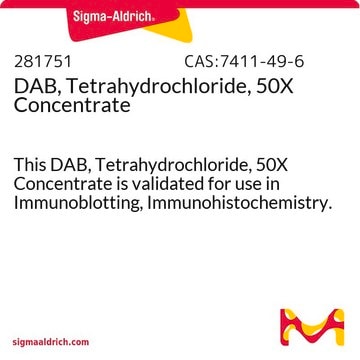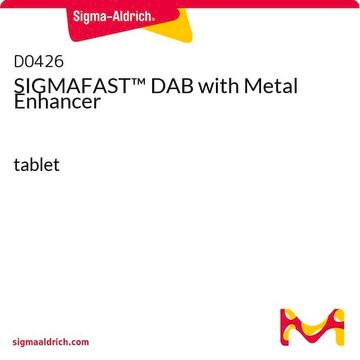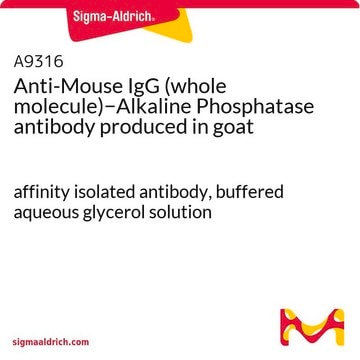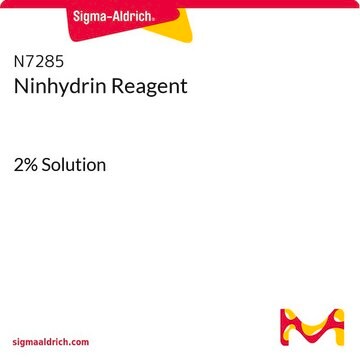D7679
3,3′-Diaminobenzidine (DAB) Liquid Substrate Dropper System
liquid
About This Item
Empfohlene Produkte
Form
liquid
Methode(n)
immunoblotting: suitable
Löslichkeit
water: soluble
Versandbedingung
wet ice
Lagertemp.
2-8°C
SMILES String
Cl.Cl.Cl.Cl.Nc1ccc(cc1N)-c2ccc(N)c(N)c2
InChI
1S/C12H14N4.4ClH/c13-9-3-1-7(5-11(9)15)8-2-4-10(14)12(16)6-8;;;;/h1-6H,13-16H2;4*1H
InChIKey
KJDSORYAHBAGPP-UHFFFAOYSA-N
Allgemeine Beschreibung
Anwendung
Vorsicht
Menge
Nur Kit-Komponenten
- 10× DAB Liquid Chromogen 10 mL
- premeasured, ready-to-use buffer/peroxide solution for individual application 10 x 9
Signalwort
Danger
H-Sätze
Gefahreneinstufungen
Acute Tox. 4 Oral - Carc. 1B - Eye Irrit. 2 - Muta. 2
Lagerklassenschlüssel
6.1C - Combustible acute toxic Cat.3 / toxic compounds or compounds which causing chronic effects
WGK
WGK 3
Analysenzertifikate (COA)
Suchen Sie nach Analysenzertifikate (COA), indem Sie die Lot-/Chargennummer des Produkts eingeben. Lot- und Chargennummern sind auf dem Produktetikett hinter den Wörtern ‘Lot’ oder ‘Batch’ (Lot oder Charge) zu finden.
Besitzen Sie dieses Produkt bereits?
In der Dokumentenbibliothek finden Sie die Dokumentation zu den Produkten, die Sie kürzlich erworben haben.
Kunden haben sich ebenfalls angesehen
Unser Team von Wissenschaftlern verfügt über Erfahrung in allen Forschungsbereichen einschließlich Life Science, Materialwissenschaften, chemischer Synthese, Chromatographie, Analytik und vielen mehr..
Setzen Sie sich mit dem technischen Dienst in Verbindung.










